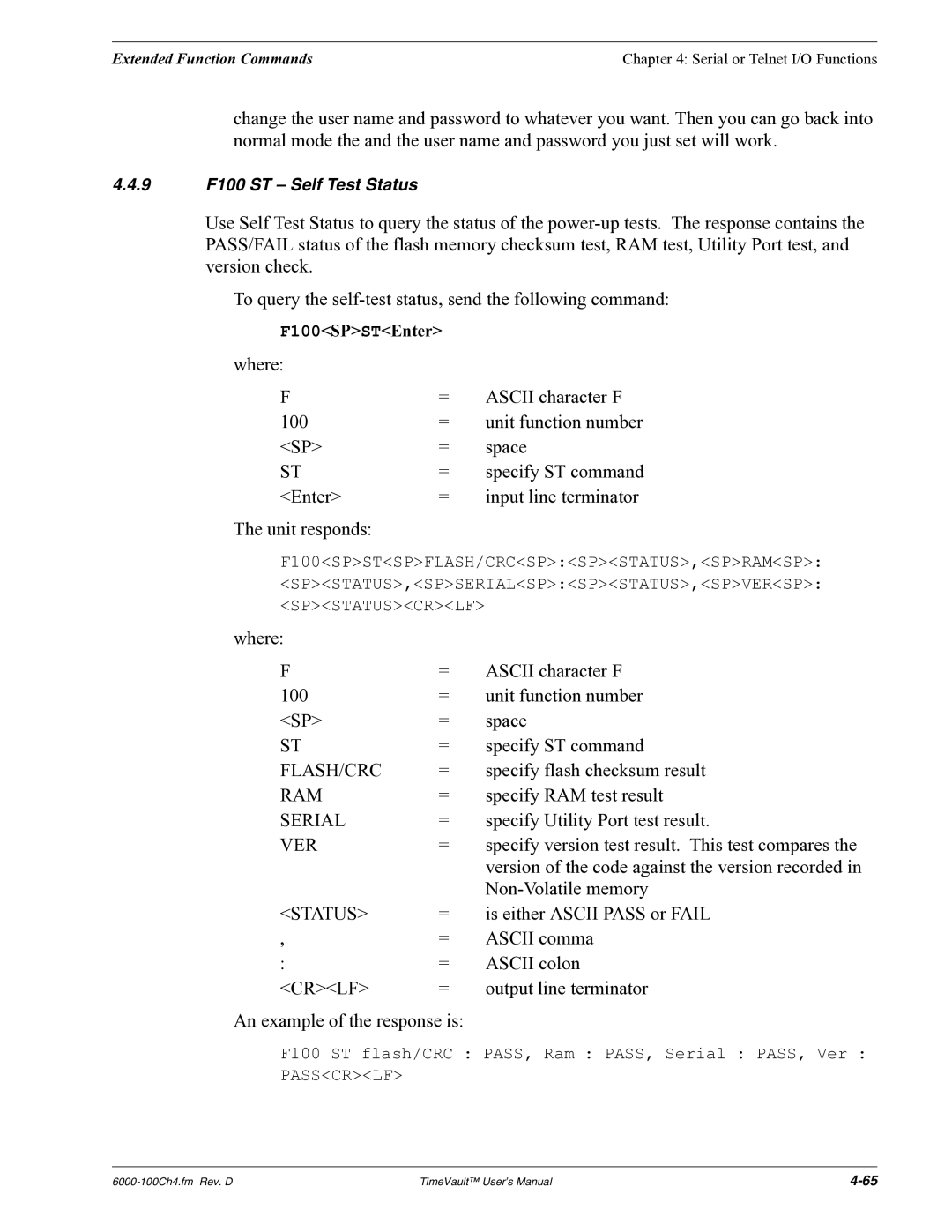
Extended Function Commands | Chapter 4: Serial or Telnet I/O Functions |
change the user name and password to whatever you want. Then you can go back into normal mode the and the user name and password you just set will work.
4.4.9F100 ST – Self Test Status
Use Self Test Status to query the status of the
To query the
F100<SP>ST<Enter>
where: |
|
|
F | = | ASCII character F |
100 | = | unit function number |
<SP> | = | space |
ST | = | specify ST command |
<Enter> | = | input line terminator |
The unit responds: |
|
|
F100<SP>ST<SP>FLASH/CRC<SP>:<SP><STATUS>,<SP>RAM<SP>:
<SP><STATUS>,<SP>SERIAL<SP>:<SP><STATUS>,<SP>VER<SP>:
<SP><STATUS><CR><LF>
where: |
|
|
F | = | ASCII character F |
100 | = | unit function number |
<SP> | = | space |
ST | = | specify ST command |
FLASH/CRC | = | specify flash checksum result |
RAM | = | specify RAM test result |
SERIAL | = | specify Utility Port test result. |
VER | = | specify version test result. This test compares the |
|
| version of the code against the version recorded in |
|
| |
<STATUS> | = | is either ASCII PASS or FAIL |
, | = | ASCII comma |
: | = | ASCII colon |
<CR><LF> | = | output line terminator |
An example of the response is:
F100 ST flash/CRC : PASS, Ram : PASS, Serial : PASS, Ver : PASS<CR><LF>
TimeVault™ User’s Manual |
